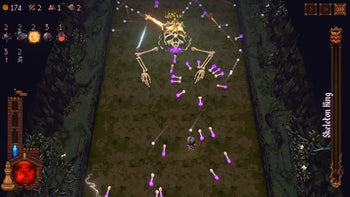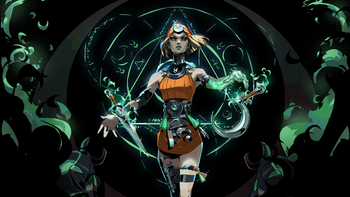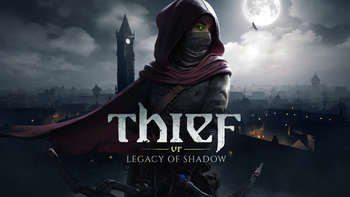The Economy of Nearly Dying
Those systems mentioned above are a part of an ingenious economy designed to feed the player with a risk-reward setup of things like health, score and score multiplier, additional active powers and more. How players use these can often determine how you’ll fare onslaught-to-onslaught and with each level change. Yep, that’s right, within each layer, after swarms are cleared, you descend another layer within the ‘layer’ (the game’s term for each level) and every time you do the shape of the arena changes and introduces new challenges. These range from harder enemies, new enemy-types, lasers that can be static or moving, enemies with lasers who also move and oh-so-much more. Remember, this game is out to kill you, Kill Knight.
This means keeping tabs on a few of the things that are in your arsenal, as the game is largely about a hugely limited amount of crowd control and how you keep yourself both alive and powered up. And some of its Challenges, which we’ll get to in a minute, require you to maintain a stayed hand because you can lose momentum when there’s nothing left to kill. (Though these ‘gaps’ in fodder are fleeting, at best, but enough to rock your rhythm.)
"Get too bogged down in trying to build your sword meter for that all-powerful Hyper Drive and you’ll quickly come undone..."
Honestly, the balance with all of this is phenomenally handled and while it’s obvious enemy AI here is simply “swarm, swarm, swarm”, it doesn’t make the baddies any less predictable, and players can become flustered when you start to overthink that economy and how best to utilise it to keep not just yourself alive, but all of your streaks and abilities up and running. Get too bogged down in trying to build your sword meter for that all-powerful Hyper Drive and you’ll quickly come undone. Try too hard to mix up your active reloads and you’ll miss the slower enemies in the thick of the swarm ready to swat you. Attempt to parry a flashing baddie to activate the slow time ability, an you might get cut up by spinning blades and other monstrosities who see a gap in your own actions.
There’s just always so much going on that your overall best strategy out of the gate is to simply listen to audio cues and play on instinct. The thoughtful stuff will naturally come later, just... don’t overthink it.
*Click "Would You Like to Know More?" for... MORE!
























